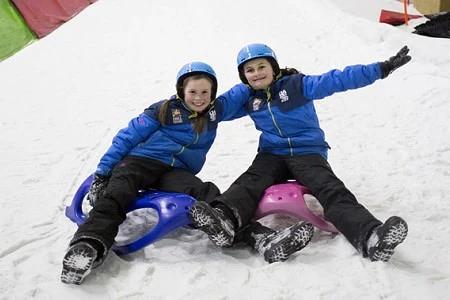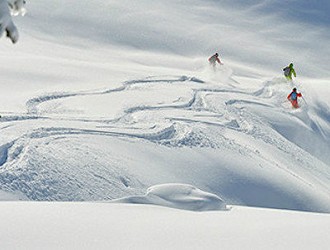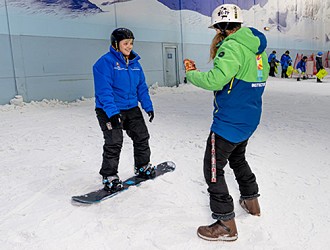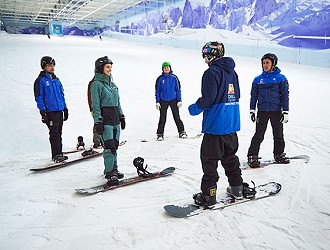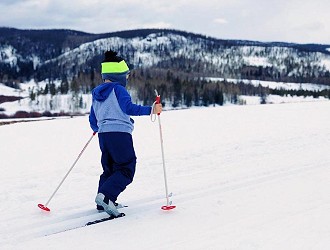Snowboard Terms & Definitions
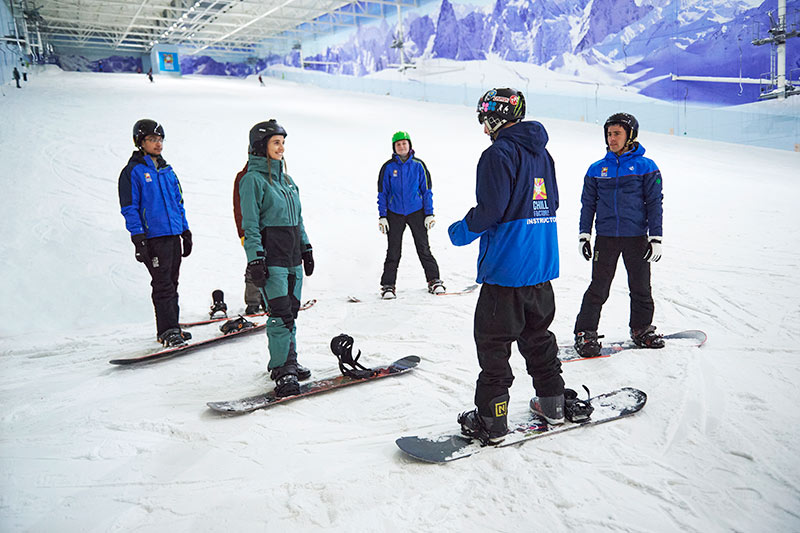
A
Aerials: Freestyle ski jumping involving flipping in the air.
Alpine Skiing: Downhill skiing as opposed to Nordic skiing or Telemark skiing.
Apres-Ski: Time spent in the bar after a day of skiing.
Artificial Snow: Man-made snow. Not as fine as real snow.
B
Baseplate: A very important part of your bindings. The baseplate sits at the bottom of your bindings in contact with the ski/snowboard and transfers all of your movement into the ski or board.
Biathlon: A ski race that combines cross country skiing and rifle shooting.
Binding: The thing that connects your boot to your ski or snowboard. The bindings on skis are designed to release the boot in the case of a fall. Snowboard bindings don’t auto release.
Black Run: Advanced level ski slope for good skiers and snowboarders.
Blue Run: A gentle ski slope suitable for beginner skiers and snowboarders.
Button Lift: A ski lift with a round plastic disc at the end of a long pole. The disc is placed between the legs and gently pulls skiers and boarders up the slopes.
C
Cable Car: A large aerial lift that transports skiers and snowboarders up the slopes.
Carving: Turns where the edges of the skis or snowboard are used.
Carving Skis: Narrower skis designed for tight, clean turns.
Chair Lift: An aerial ski lift that you sit on and rest your skis or snowboard on a bar.
Crevasse: A deep and sometimes hidden crack in a glacier.
Cross-country Skiing: Cross-country skiing is done on narrow skis where the heel isn’t attached to the ski. It’s done on flat tracks and gentle hills rather than ski slopes.
D
DIN Settings: Deutsche Industrie Normen in German, this is the tension release setting that determines at what pressure your binding releases the boot on a fall.
Drag Lift: A lift that simply pulls you up the slope as you stand on your skis or snowboard.
Downhill Edge: The edge of the ski that is on the downhill side as your are traverseing the mountain.
Downhill Ski: The ski that is on the downhill side as you traverse the slope.
E
Edge: Used for control whilst turning, this is the metal strip on the edge of the ski or snowboard.
Equipment: Refers to your skis, snowboard, boots and ski-poles.
F
Fakie: Skiing or snowboarding backwards.
FIS: Stands for Federation Internationale de Ski, the international organization of ski sports.
Freestyle: A style of skiing or snowboarding that focuses on jumps, tricks and aerials.
G
Gate: A flag or pole in the snow marking a racing area.
Goggles: Worn to protect your eyes against sun, wind and glare.
Gondola: An aerial lift that is enclosed and generally faster than an open chairlift.
Grab: Grabbing hold of any part of your skis or snowboard whilst doing tricks and jumps.
Grooming: Where large piste basher machines flatten and smooth the snow on the slopes. Usually done throughout the night in most ski resorts.
H
Halfpipe: A U-shaped channel with smooth walls used by freestyle skiers and snowboarders for aerial tricks.
Hard Pack: Snow that has been compressed down as far as it will go, making it hard packed.
Heliskiing: Getting a lift from a helicopter to off-piste areas that are otherwise inaccessible and skiing on fresh powder.
I
Ice: When the snow on the slopes becomes like ice as it hasn’t snowed for a while.
Indy Grab: The most basic snowboarding grab, this is where you grab the toe edge of the snowboard with your rear hand whilst in the air.
Inside Edge: The ski that is on the inside of a turn.
J
Jib: Snowboard or skiing across a non-snow surface like a rail or box.
K
Kicker: A small, triangular shaped jump usually made of snow.
L
Lift Pass: A lift pass is a ticket that allows you to use the ski lifts.
M
Moguls: Moguls are bumps set out on a slope - usually found on black runs and used by advanced skiers.
Monoski: A type of ski with both boots attached to a single ski.
Mute Grab: Whilst in the air, grabbing the toe edge of the snowboard between the bindings with your front hand.
N
Nordic Combined: A skiing race which combines country skiing and a ski jump.
Nordic Skiing: See cross-country skiing.
O
Off-Piste: A snowy area away from the marked ski slopes. Popular with freestyles and people that enjoy powder snow.
Ollie: A jump or hop on skis or snowboard that can be done on the flat.
Outside Ski: The ski on the outside of a turn.
P
Packed Powder: The perfect ski conditions where new snow has been groomed or ridden over to pack it down.
Piste: The French word for “ski slope”.
Piste Basher: A tracked vehicle used for grooming ski slopes to even out the snow and prepare the slopes for skiers.
Powder: Fresh snow that hasnt been packed down. Found off-piste or just after a heavy snowfall.
R
Rail: A metal bar found on snow parks built to be used by freestyle skiers and snowboarders.
Red Run: Intermediate level slope.
Rope Lift: Usually found in beginner ski areas, this is a lift where you hold onto a slow moving rope and it gently pulls you up the slope.
S
Salopettes/Ski Pants: Warm, waterproof trousers designed for snow sports.
Schussing: Skiing straight downhill without turning.
Ski Area: The area of the mountain designated for skiing. Usually marked by flags or ropes at the edges of the slopes.
Slalom: A downhill ski race between tightly spaced gates that must be passed through with short, quick turns.
Slope: A slope is an area of snowy hill that is designated for skiing/snowboarding on.
Slush: Wet snow, snow that is melting.
Snow Canon/Snow Machine: Machines on the slope that turn water into artificial snow.
Snow Park: An area built especially for freestyle skiers and snowboarders, filled with jumps, rails, boxes etc.
Snowplough: A beginners skiing technique where the skis are held in a ‘V’ formation with the tips almost touching. It allows for slowing down and turning.
T
T-Bar: There are two types of T-bar lifts - singles and doubles. Each are a T bar suspended from a moving line. With a single T-Bar lift, the bar goes between our legs and pulls you up the slopes. The double is shared with a friend and one half of the T goes behind your bottom.
Telemark Skiing: Telemark skiing is a combination of downhill and cross-country skiing. The skis have detached heels, but are still wide enough to handle going fast and making sharp turns.
Tips: The front end of the skis.
Travelator/Magic Carpet: A conveyor-belt like lift where you stand on the lift and it carries you to the top of the slope. Usually found on beginner slopes and children’s areas.
Traverse: Skiing across a slope in a zigzag pattern rather than straight down.
U
Uphill Edge: The edge of the ski that is on the uphill side when traversing the slope.
Uphill Ski: The ski that is on the uphill side as your traverse the slope.
W
Wax: Used on the underside of skis and snowboards to help them glide smoothly over the snow.
White Out: When visibility drops to almost nothing; caused by heavy snowfall, fog, or a combination of the two.


